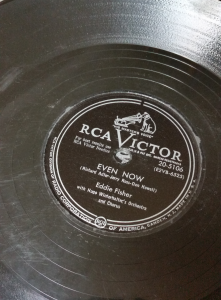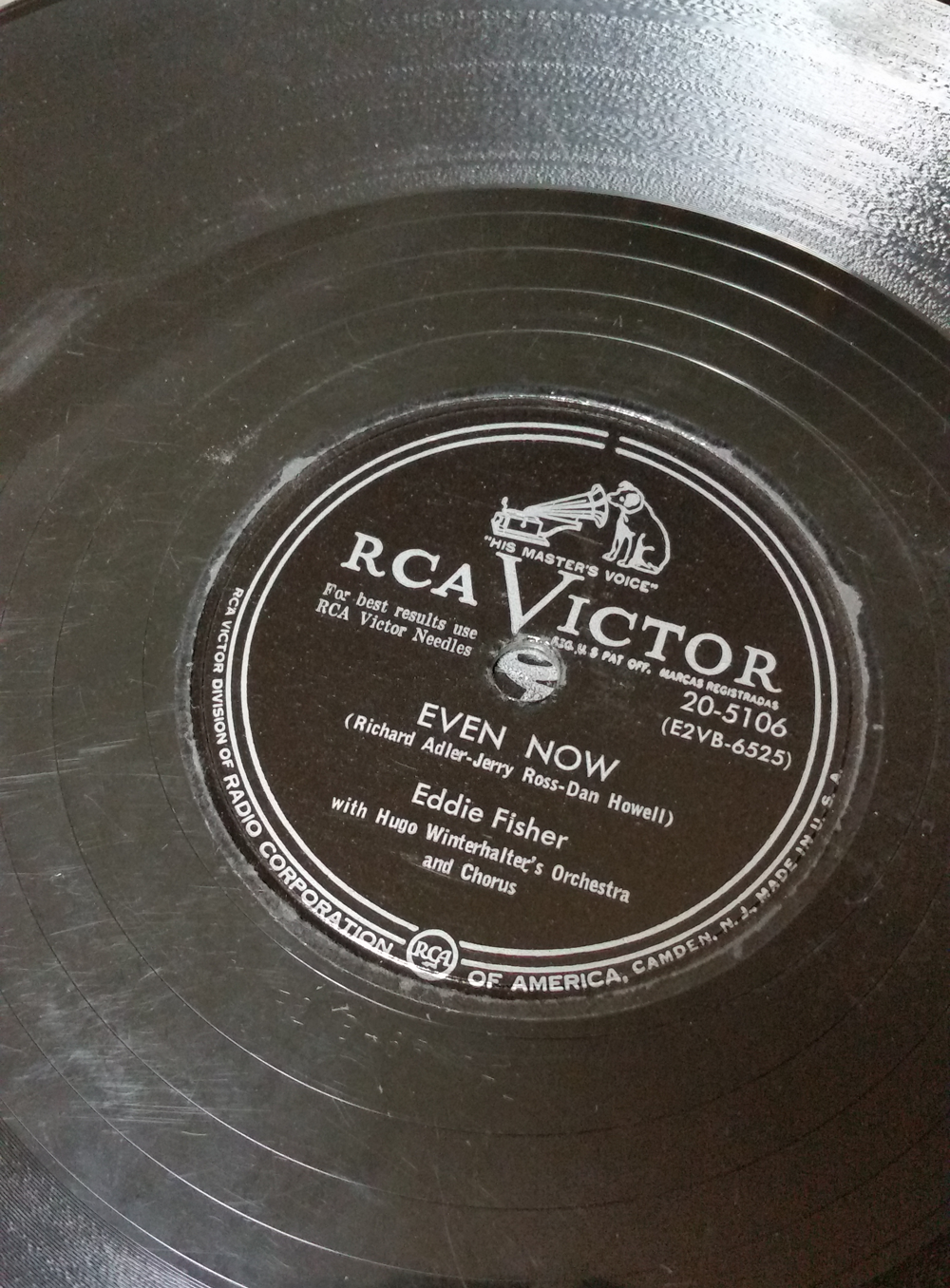
In our last post I mentioned that I was working on digitizing some old 78 RPM records. Well, the task has been accomplished, and I have nearly 60 new songs in the collection. Digitizing is easy but doing it the right way can be time consuming.
78 RPM records were usually, but not always, 10 inches in diameter. There are some 12-inch diameter discs, and there are some that are much smaller. If you have a 12” recording of Bunny Berigan’s “The Prisoner Song” you have something very special. I have a Red Raven Movie Record that is about 8 ¼ inches across and an indeterminate yellow record that has a diameter of 6 inches. These smaller records are plastic or vinyl. On the other hand, 10-inch 78s are made from shellac. The actual concoction included, as I recall, clay. So, the discs are fragile, and you must be very careful.
But, the most important thing to know is that the grooves, and the “bumps” in the grooves, are not the same as those of a modern 12-inch vinyl LP. The 78’s grooves are wider and the bumps, so to speak, are rougher. Although early record player tone arms were steel needles, the later model styli had tiny ruby nibs on the ends. LP styli usually had diamonds.
Folks today who have not set up a turn table don’t know the lengths we would go to so we could be assured the stylus’ touch on the record was a light as possible. Unfortunately, 78 RPM records require a broader stylus tip and a heavier weight on the tone arm. It is not unusual for a tone arm optimized for a 33 1/3 RPM LP to bounce off a 78 RPM shellac disc.
Some companies made turn tables with “flip over” cartridges. On one side of the cartridge had a diamond stylus, and on the other side had a ruby stylus. But, as 78s fell out of favor, most high-end turn table manufacturers made machines that only played 33 1/3 and 45 RPM records.
Today, it is necessary to find a turn table that plays 78 RPM records. If you read my last post, you know that I found such a thing at a closeout sale. I am content to use it for my shellac discs, but it is not sophisticated enough to play my vinyl LPs. I fear damage to those newer discs. I really, really, really do not want my Jethro Tull “Stand Up” album to be chewed to pieces.
The neat thing about this new turntable is that it does not have the low power phono signal out. It has a standard line level out with RCA connections. This means that it is a cinch to connect to the line in jack on the back of one of my computers.
I use Audacity software (https://www.audacityteam.org/) to record and export the material from my 78s. Audacity is free and is relatively easy to use (Audio software is rarely “easy”, in the classical sense), but Audacity is not too bad. They online help options are very good, and there are step-by-step guides that specify how to prepare and execute your digitizing projects for both 78 and 33 1/3 records.
There is no point to go over the digitizing steps here because Audacity does a much better job than I can. However, it is worth noting that you will want to be aware of these points:
- You can pretty much guarantee that your 78 RPM record is loaded with pops, clicks, hisses and lots of other flaws. In fact, on one of my records I could hear the scrapping that the recording machine made when it etched the original master disc. You can get rid of some noises and reduce most of the others. But, unless you spend a tremendous amount of time you will not get a pristine recording.
- Depending on the recording date, your 78s may use new-ish, old, or ancient technology. Early 78 recordings were not done “electrically”, while later ones were. The Audacity help guide can assist you in sorting this out. The era during which the record was made will determine what you have to do when you make your project.
- There is a thing called the “RIAA curve”, and you will have to do a little experimenting. The RIAA curve is a specification about how the sound in a recording is recorded and played back. It is complicated, but you can check out the gory details here – https://en.wikipedia.org/wiki/RIAA_equalization. You will be testing and trying the process for inverting the curve. Trust me, it is weird but fun.
- You will need to test filters, such as high pass and low pass filters, and you will become a master of equalization. Not to worry, the Audacity step-by-step instructions will guide you.
- Audacity is not perfect, and they even tell you that. The instructions mention optional or alternative software that can do a better job than Audacity for certain steps. Call it “truth in advertising”. But, I found Audacity to do the job perfectly OK for me.
Why do all the work of digitizing records? That is a good question. Once my records are in the computer, I can put them into a media player or onto a flash drive so that I can take the tunes with me. Because my cars can play music directly from a flash drive, I can have my entire library (if I am that crazy) with me while I am on the road.
There is one other factor. If I play the digital versions of my songs from the 78 RPM records I do not add any wear to the disc. On top of that, because I did a pretty good job preparing the files, the songs sound better, too!
